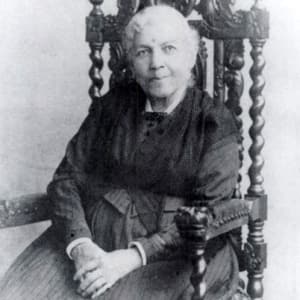
Molly Brown
Philanthropist and activist Molly Brown was best known for her social welfare work on behalf of women, children and workers. She was also a survivor of the sinking of the ‘Titanic.’
Synopsis
Born in Missouri in 1867, Molly Brown was an American human-rights activist, philanthropist and actress who survived the sinking of the RMS Titanic. Brown and her husband moved to Denver, Colorado, after achieving great prosperity through the discovery of gold at one of his mines in 1893. While traveling in Europe, Brown got word that her grandson was ill, and subsequently booked a trip back to the United States on the RMS Titanic, famously surviving the ship's sinking. She later took up a number of activist causes, including women's suffrage and workers' rights, and also worked as an actress. She died on October 26, 1932 in New York City.
Background and Early Life
Philanthropist Margaret Tobin, better known as Molly Brown, was born on July 18, 1867, in Hannibal, Missouri. Sometimes referred to as "the Unsinkable Molly Brown," this survivor of the 1912 Titanic disaster has become the subject of many myths and legends throughout the years. Ironically, Brown was never referred to as "Molly" during her life, with the moniker given to her posthumously.
Brown's early years were relatively quiet; she grew up in an Irish-Catholic family with several siblings. At the age of 13, she went to work in a factory. After two of her siblings headed to Colorado to seek opportunity with the mines there, she followed, moving to Leadville in 1886. The town was like a giant mining camp, and Brown found work doing sewing for a local store. Her life soon changed when she met J.J. Brown, a mining superintendent. The couple fell in love and married in September 1886.
Marriage and Activism
Molly and J.J. Brown struggled financially in the early days of their marriage. They had their first child, Lawrence Palmer Brown, in 1887, and a daughter, Catherine Ellen, followed two years later. As her husband rose up the ranks at the mining company, Brown became active in the community, helping miners and their families and working to improve the town's schools. Molly Brown was never interested in fitting in with the other leading citizens of Leadville, preferring to dress in dramatic hats.
The Browns achieved great prosperity through the discovery of gold at Little Johnny Mine in 1893, with J.J. being given a subsequent partnership at the Ibex Mining Company. The family moved to Denver the following year, Colorado, where Molly helped found the Denver Women's Club. She also raised money for children's causes and continued to help mine workers. And in an unheard of feat for women at the time, Brown also ran for a Colorado state senate seat at the turn of the century, though she eventually withdrew from the race.
The Brown marriage was not a happy one, however, with J.J. harboring sexist views on the role of women and not supporting his wife's public endeavors. The two legally separated in 1909, though they never officially divorced.
With her wealth, Brown expanded her own horizons, taking numerous trips around the world. It was during one such trip in April 1912, while in France, that Brown heard that her grandson was ill. She decided to take the first available ship, the RMS Titanic, back to the United States. It was the maiden voyage of the vessel that was supposed to be nearly indestructible.
'The Unsinkable Mrs. Brown'
The Titanic struck an iceberg on April 14, 1912, around 11:40 p.m., and sank in only a few hours. Brown was able to get on one of the ship's few lifeboats and was later rescued by the Carpathia. Aboard the Carpathia, a battered Brown did whatever she could to help the other survivors, including raising money from the more wealthy to help poor passengers. Her acts of heroism, which made news, earned her the nickname "the Unsinkable Mrs. Brown." (Both a fictionalized Broadway musical and movie adaptation inspired by Brown's life were released in the 1960s, with the latter starring Debbie Reynolds in an Oscar-nominated role.)
With her newfound fame after the disaster, Brown spoke out for many causes. She served as a mediator of sorts between striking Ludlow miners, who had been working under brutal conditions, and the interests of John D. Rockefeller Sr. and Jr. She also aligned herself with the women's suffrage movement, becoming allies with Alice Paul, and spoke about workers' rights at the 1914 Conference of Great Women.
Brown once again campaigned for a political seat, this time as a U.S. senator for Colorado, though she didn't win election. Upon the outbreak of World War I, she worked with the Red Cross, setting up facilities in Newport, Rhode Island seasonal home, and later traveled overseas to work with the American Committee for Devastated France.
From the late 1920s into the '30s, the dynamic Brown continued to explore her interests and defy convention, working as an actress. She regularly appeared on the stage in L’Aiglon, inspired by the work of Sarah Bernhardt and her portrayal of the Duke of Reichstadt.
Molly Brown died on October 26, 1932, in her sleep at the Barbizon Hotel in New York City. A well-received biography on her life was published in 1999—Molly Brown: Unraveling the Myth, by Kristen Iversen.




